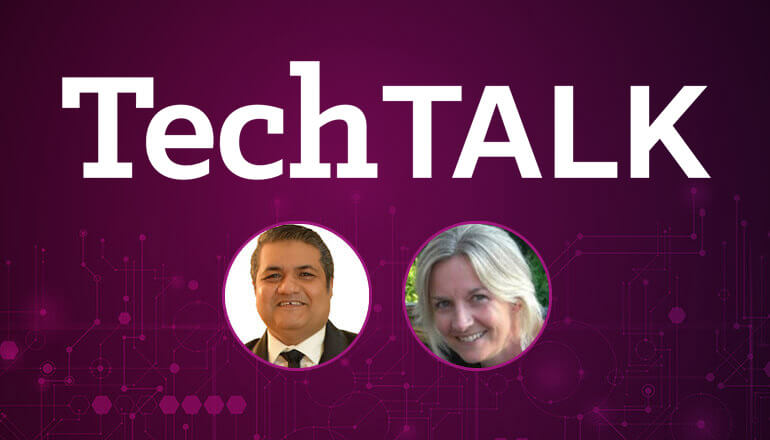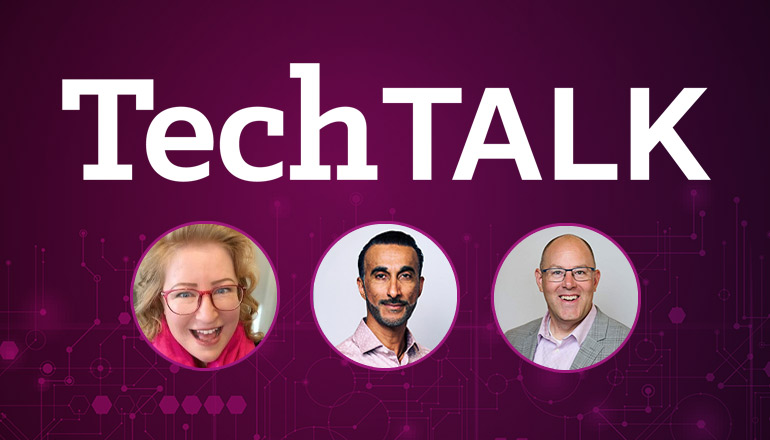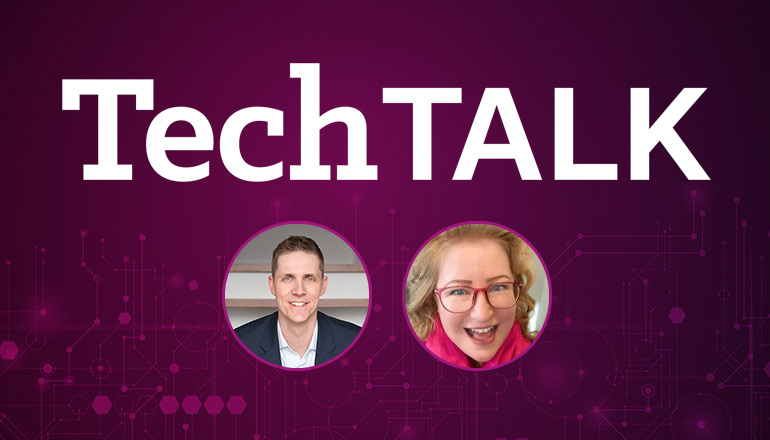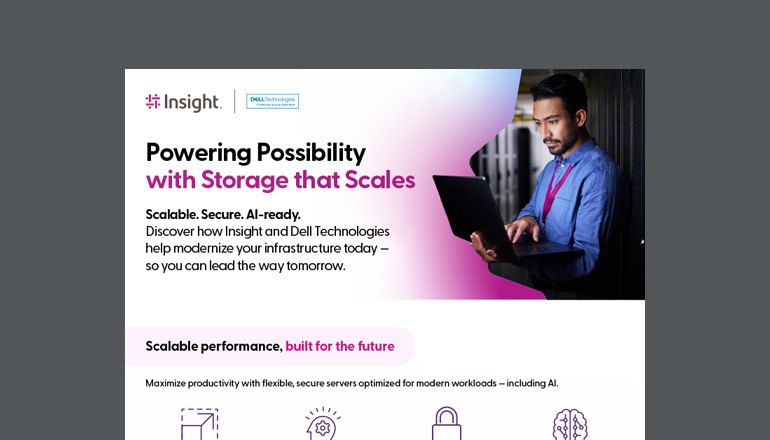Transcript of audio:
The Evolution of Data Storage to Critically Transform your Business
Published January 3, 2022
SHAWN
Hello, and welcome to Insights Tech Talk. I'm Shawn Ambrose and I lead our Field Sales Business for Canada. I'm joined today by Arunan Nadarajah and Chuk Ezefibe. Arunan is a solution architect on our hybrid data center team and Chuk is a solution architect on our security team. This is part two of a three-part series on data storage and security. In the first part of this series, we focused on what data is, it's importance and value and then briefly touched on data storage. In today's session, we'll dive deeper into data storage and then look at approaches to securing the data. Arunan, let's pick up where we left off from the end of our last session. Can you help us understand why storage is so critical for clients looking for transformation?
ARUNAN
Right. We know that data is critical for any organization. A new term IOE, which is Internet of Everything was coined by Cisco. It's an extension to the term IOT, and it is defined as an intelligent connection of people, process, data, and things. The more this connection happens, the strain on data keeps going up, whether these device is labeled as things either producing data and sending it back for processing or looking for results from that processed data. Everything converges on this storage and its ability to meet this ever-growing demand on data. So an organization looking for transformation needs to look at their infrastructure and make sure they're picking the right storage platform that will meet their business needs. Now, this is true for all storage, whether it's in the cloud, it's on premise or at the edge. Storage is critical for transformation.
SHAWN
Yeah, thanks, Arunan. That's a lot of progression and evolution. The storage has been around forever though. Like, so what what's the industry done to meet these new demands that you describe?
ARUNAN
Yeah, so here's what the industry has done to address the performance and capacity needs. Let's tackle that first. At the core of the storage are these drives. It used to be mechanical spinning drives, then the solid state drives came into the market. It's just these have been around for a long time. But there has been a lot of advancement in the recent past to balance capacity and performance, and then deliver it at an affordable price point. So now the customers can pick from the range of SSDs to build out their storage, that'll meet their performance and capacity needs and also fit the budget. Now you would think that would be enough. More to be done and the industry came through on that as well. Let me kind of paint a picture. We've all been to Costco and it's a huge warehouse. They give you this big cards that you take around so you can grab everything usually in multiples at the speed that you're comfortable with. Then you bring all that and then stand in line at the checkout. Same is true for storage, even though the capacity and performance have been taken care of, the bottleneck was those lanes. The transport mechanism needed to be modernized. More lanes were needed to get that data. So NBME, High-Speed Parallel Transport was born to eliminate that bottleneck even though NVME, which stands for Non-Volatile Memory Express, that standard was initiated awhile ago, but then it is in full swing now. All vendors now have solutions that has NVME built in within the storage system and also outside as well to form that storage fabric. This eliminates that lineup, it gives you the full bandwidth to move data back and forth without any friction. Now, the customers can enjoy the speed and performance, the modern storage platform can bring to their data center.
SHAWN
Well, thanks, Arunan. I really liked the analogy of somebody who has spent a little bit of time at Costco, anything to help get through that, that checkout line sounds great. When I think about this back to storing though, you talked a lot about performance and capacity. Is that enough for the transformation that could feels like there should be a little more there?
ARUNAN
Absolutely, and I'm glad that you brought that up. Having more of the same thing or a better version of, it does not cut it anymore. There was a quote about transformation that kind of stuck in my mind. It says transformation done right it's like a caterpillar turning into a butterfly. And if it's done wrong, all you have is a very fast caterpillar.
That's funny and true at the same time. So transformation should accomplish a few more things. It needs to simplify operations. This is necessary. Efficiencies like deduplication and compression so you can put more into smaller spaces, easy to manage, so you don't need to have a highly trained storage specialist to manage your storage. Generalists can manage it with intuitive interfaces. AI driven failure prediction and preemptive resolutions, call home facility for hardware failures. All towards doing more with less. It needs to be more resilient, highly available. There's no tolerance for downtime anymore, planned or unplanned needs to be always on. Even through maintenance, it needs to facilitate a seamless disaster recovery during unexpected site failures. It could be on-prem to on-prem or on-prem to the cloud, or back from cloud background on-prem. These advanced functionalities should be native to these platforms. Pay for what you use, sizing the storage has always been difficult. We live in a dynamic world and it needs change constantly that introduces a business stress. Should I buy more than what I need or buy less and then spend money later on to grow it? The asset service model takes that risk away. You only pay for what you use, tomorrow if you want more, you will add. If you need less than you can drop your consumption. This is a huge advantage that the customers have now. Originally, it was only offered in the public cloud but now it is available across the board.
SHAWN
Boy, what a lot of evolution there. It seems like there's a lot for our clients to think about. How does Insight help to navigate this?
ARUNAN
It is a lot, but it becomes easier if you break down the components of the data center. Again, it doesn't matter where it is, public cloud, on premises or on the edge, all of the above in a hybrid setup. So I want you to imagine some concentric circles or layers. So data is in the middle and the next layer around is storage because data need to sit on storage. Now, data sitting on storage does not provide any value, it needs to be processed to be meaningful so that the layer on top of that would be the compute and that's where applications run to process the data to be useful. Oh, that's great. Now useful to whom? This needs to be shared. So we wrap high-speed networking around it. That's the next layer. So everyone can access it now, not everyone because we want to make sure the right people are accessing the data, so we wrap security around. So with that in mind, here's how we help our customers. We started the assessments to capture their current state on all layers. There's a lot of interdependencies between these layers and it needs to be factored in during this phase. Then we run workshops to understand their pinpoints and caps. More workshops will determine their future need and then document the business and outcomes they're looking for. Then we get into a design phase to design a solution that will meet these business outcome. And we do this together collaboratively. So we are all on the same page. This stage, will also include some technology presentations and demos, but once done, then we help the customer with the implementation and more importantly the migration as well. This is how we take the customer on that transformation journey.
SHAWN
Yeah, thanks, Arunan. That's fantastic. If we go all the way back to the beginning of this three-part series we talked a lot with Kiran around what is data and why is it important and its value in the business and the enterprise and then thank you, Arunan, for this is much deeper dive into how do we store this data and different ways to look at that. And as we can see, there's a lot of complexity, but a lot of opportunity there. And you've done a great job of framing that and offering how it is that we can help our clients with that. You also touched a couple of times on security. So, Chuk, I'd like to invite you into this conversation here. Chuk is one of our security solution architects within insight, Canada and Chuk, maybe you could talk to us a little bit about what are the ways to secure that storage.
CHUK
Yeah, thank you, Shawn. Looking at itself from enterprise standpoint, security storage deserve a multi-faceted approach, but two of those approaches are most crucial towards securing this very important component of the infrastructure, whether it's hosted in the public cloud or on premise. First is the insurance storage platform supports the stronger encryption authority. Something like AS that will provide a confidentiality of data when at risk or in transit. Secondary approach is the network access control for a storage platform. And these include things like multi-factor authentication, role-based access control for admin users as well as for things like agent used to perform backset, soja sets, data backup jobs. Also, network segmentation is vital towards the insurance, storage systems are kept in isolated network. What I mean by that is having proper segmentation and then granting a specific sets of network punishments as needed. Implementing all these types of controls will not only improve the security posture for organizations, but also help them meet compliance requirements like PCIDSS, HIPAA, PAPITA, and the GDPR.
SHAWN
Yeah, thanks, Chuk. Certainly a lot to consider there and I appreciate some of the thoughts there around encryption, around access control, around network segmentation, and then you also talked about backups. Maybe we can look at that a little bit more. How would an organization ensure they're doing backup in the right way and able to recover in the event of a disaster?
CHUK
Yeah, now thanks for bringing that up, Shawn. Data backup that's our backup is a very important piece of this disaster recovery strategy for every organization. So organizational issue from time to time trigger the disaster recovery process and test their recovery from their backup system, just to make sure it's working properly. But that said, performing a recovery test alone is not sufficient especially with the recent proliferation of ransomware attacks. So it's important that the backup data is free from any form of malware. A good technique will be to use air capping as part of backup recovery strategy to reduce the risk of having both the primary data and the backup copies infected by malware if a cyber attack should happen. So backup data is the last line of defense. It offers the very last parts for recovery after a disaster. Even if everything is broken, the backup data should be safe.
SHAWN
Right, right. Yeah, so important and such a good a tip of thought there around making use of air gap technologies. And maybe to kind of bring this all together here, Chuk, can you talk to us a little bit about how insight is helping, how we're helping our clients build that secure storage and data security program?
CHUK
Yeah, sure. Insight leverage is, it's strong partnership with the industrial leading OEM vendors to design and build highly optimized storage and data security solutions. Of course, based on a client's risk appetite. The good news here is that a security is key focus when designing such a solution and is not treated as an after thought and this is very important. Wherever an organization is at on their cloud and data center transformation or digital innovation journey, insight is always available to assist and help them offload complexity as they scale their system.
SHAWN
Yeah, right. Thanks so much, Chuk. And I think it's great how we're looking to serve our clients when we think about data storage and security and knitting altogether in that it is a very interconnected design thought and architectural approach. But we're going to to close off on part two of the series here. Thank you so much to our audience for tuning in. I hope you got some value out of this session and we're really excited to bring you part three of this soon where we'll take the security discussion work today. Chuk talked about securing the data around a storage platform, and we're going to take that further into how do we connect that to an overall security posture. So thank you so much Arunan and Chuk for your time today. It's been a pleasure as always and thank you to our audience for tuning in for part two of the three part series. Have a great day.











